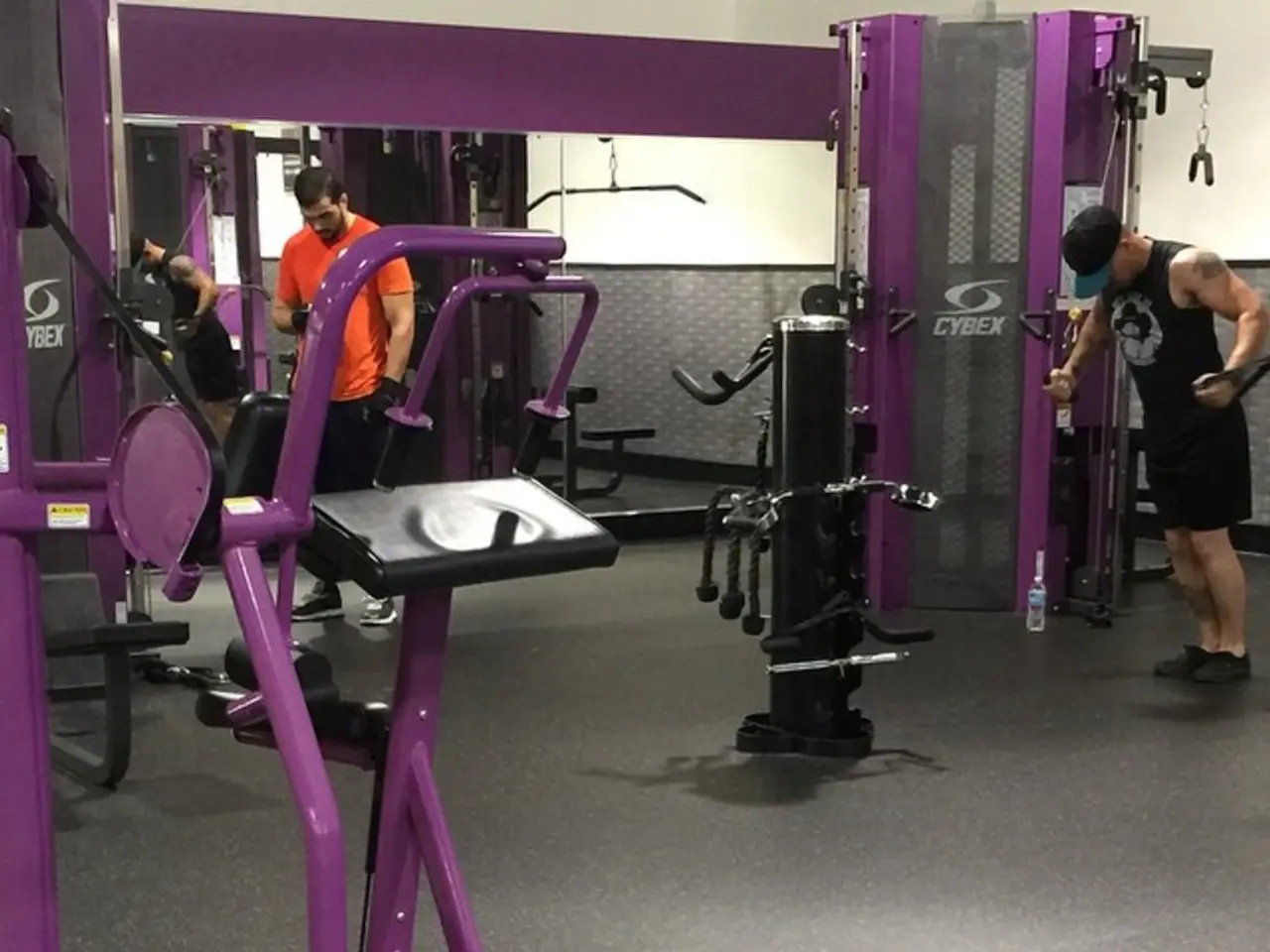Harnessing the Potency of the Unseen: The Benefits of Training in the Dark for Improving Muscle-Brain Awareness
In the realm of fitness, a new technique is gaining traction: training in the dark. This approach, far from being a novelty, offers numerous benefits for strengthening the mind-muscle connection, improving muscle activation, and optimising strength gains.
The mind-muscle connection, a term that refers to the ability to consciously engage specific muscles during exercises, can be reinforced by mental cues for muscle activation. When you train without relying on visual cues, you engage more deeply in the sensory feedback from the muscle, fostering a stronger internal awareness, or proprioception. This heightened focus improves the brain's ability to send strong, repeated neural signals to the targeted muscles, maximising muscle activation and the efficiency of each movement.
Training in the dark encourages a deeper intuition about your body's limitations and strengths as you progress. By minimising external visual stimuli, it becomes easier to concentrate fully on the muscle being exercised, enhancing the mind-muscle connection. This, in turn, leads to better workout performance and greater muscle growth over time.
Strength training, yoga, Pilates, and functional training can all benefit from training in the dark. These practices, when performed in low-light or dark environments, force reliance on proprioception and kinesthetic awareness, improving coordination, muscle activation, and overall performance.
While direct research on training specifically "in the dark" is limited, principles of mind-muscle connection training demonstrate that focusing attention inwardly rather than externally boosts muscle activation and workout effectiveness.
Training in the dark requires starting slowly, focusing on isolated movements, incorporating mindfulness and breathing, keeping safety in mind, experimenting, and tracking progress. It may also require slow, controlled movements to increase the time under tension for muscles and allow for better focus on muscle engagement.
In addition to its effects on the mind-muscle connection, training in the dark offers other benefits. It can make it easier to focus on internal body cues, improving flexibility in yoga or Pilates by focusing on breath, muscle engagement, and alignment. It can also reduce the risk of injury by enhancing balance, stability, and coordination.
Moreover, training in the dark can increase self-confidence and intuition due to relying on body cues instead of visual feedback. It may also heighten the remaining senses, forcing the brain to compensate for the lack of visual input by sharpening other senses.
Furthermore, training in the dark may encourage neuroplasticity by forcing the brain to adapt and strengthen connections related to muscle control and proprioception. This adaptability can lead to improved neural function and physical repair during recovery and sleep, indirectly supporting the mental focus and muscular adaptation benefits sought from mind-muscle connection training.
In conclusion, training in the dark is an emerging technique that offers numerous benefits for enhancing the mind-muscle connection. By minimising external distractions and encouraging an internal focus, it can make exercises more effective, improve muscle activation, and contribute to better workout performance and greater muscle growth over time.
- By focusing on the mind-muscle connection, one can reinforce it through mental cues for muscle activation during exercises, even in a low-light or dark environment.
- Training in the dark, whether it's strength training, yoga, Pilates, or functional training, can improve coordination, muscle activation, and overall performance due to the increased reliance on proprioception.
- Mental focus improves when training in the dark because there are fewer external visual stimuli, allowing for a greater internal awareness of the muscles being exercised.
- As one progresses with training in the dark, they will cultivate a stronger intuition about their body's limitations and strengths.
- Training in the dark may necessitate slow, controlled movements to enhance muscle engagement and increase the time under tension for the muscles.
- In addition to enhancing the mind-muscle connection, training in the dark can improve flexibility in yoga or Pilates by focusing on breath, muscle engagement, and alignment.
- Training in the dark can reduce the risk of injury by enhancing balance, stability, and coordination.
- Relying on body cues instead of visual feedback during training in the dark can increase self-confidence and intuition.
- The practice of training in the dark can encourage neuroplasticity, as the brain adapts and strengthens connections related to muscle control and proprioception, indirectly supporting mental focus and muscular adaptation benefits.




